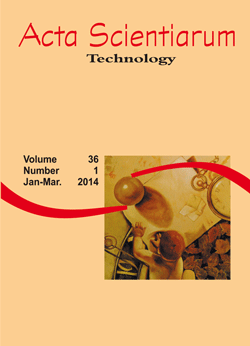<b>Extreme value theory applied to the standardized precipitation index</b> - doi: 10.4025/actascitechnol.v36i1.17475
DOI:
https://doi.org/10.4025/actascitechnol.v36i1.17475Palavras-chave:
wavelet analysis, Mann-Kendall test, SPIResumo
The Standardized Precipitation Index (SPI) is a mathematical algorithm developed for detecting and characterizing precipitation departures with regard to an expected regional climate condition. Thus, this study aimed to verify the possibility of using the time-independent general extreme value distribution (GEV) for modeling the probability of occurrence of both SPI annual maxima (the maximum monthly SPI value; SPImax) and SPI annual minima (the minimum monthly SPI value; SPImim) obtained from the weather station of Campinas, State of São Paulo, Brazil (1891-2011) and to evaluate the presence of trends, temporal persistence and periodical components in these two datasets. The goodness-of-fit tests used in this study quantify the agreement between the empirical cumulative distribution and the GEV cumulative function. Our results have indicated that such parametric function can be used to assess the probability of occurrence of SPImin and SPImax values. No significant serial correlation and no trend were detected in both series. For the SPImim, the wavelet analysis has detected a dominant mode in the 4-8 year band. Future studies should focus on the development of a GEV model capable of accounting for such feature. No dominant mode was found for the annual monthly SPI maximums.
Â
Downloads
Downloads
Publicado
Como Citar
Edição
Seção
Licença
DECLARAÇíO DE ORIGINALIDADE E DIREITOS AUTORAIS
Declaro que o presente artigo é original, não tendo sido submetido í publicação em qualquer outro periódico nacional ou internacional, quer seja em parte ou em sua totalidade.
Os direitos autorais pertencem exclusivamente aos autores. Os direitos de licenciamento utilizados pelo periódico é a licença Creative Commons Attribution 4.0 (CC BY 4.0): são permitidos o compartilhamento (cópia e distribuição do material em qualqer meio ou formato) e adaptação (remix, transformação e criação de material a partir do conteúdo assim licenciado para quaisquer fins, inclusive comerciais.
Recomenda-se a leitura desse link para maiores informações sobre o tema: fornecimento de créditos e referências de forma correta, entre outros detalhes cruciais para uso adequado do material licenciado.















